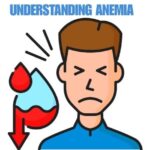Alzheimer’s disease is a complex and progressive neurological disorder that primarily affects cognitive functions such as memory, thinking, and reasoning. As the most common form of dementia, it poses significant challenges not only for those diagnosed but also for their families, caregivers, and healthcare systems. Currently affecting an estimated 6 million people in the United States alone, Alzheimer’s is projected to rise sharply as the population ages, making awareness and understanding of the disease increasingly critical.
The impact of Alzheimer’s extends beyond memory loss; it encompasses emotional and social dimensions that affect daily living and quality of life. Individuals with Alzheimer’s often experience changes in personality, mood swings, and difficulties in communicating, which can lead to feelings of frustration and isolation. As the disease progresses, the loss of independence becomes more pronounced, necessitating increased support and care from family members or professional caregivers.
Understanding Alzheimer’s disease is not only about recognizing its symptoms but also about grasping the underlying biological mechanisms, risk factors, and the multifaceted approach required for management and care. The disease is characterized by the accumulation of abnormal proteins in the brain, leading to neuronal damage and cognitive decline. Despite ongoing research, the precise causes remain elusive, underscoring the complexity of the disorder.
This article aims to provide a comprehensive overview of Alzheimer’s disease, exploring its symptoms, causes, diagnosis, treatment options, and strategies for living with the condition. By fostering a deeper understanding of Alzheimer’s, we can enhance support systems, promote early detection, and ultimately improve the lives of those affected by this challenging disease.
1. Overview of Alzheimer’s Disease
Alzheimer’s disease was first described by Dr. Alois Alzheimer in 1906. It typically begins with mild memory loss and gradually progresses to more severe cognitive decline, impacting daily functioning and independence. While the exact cause remains unclear, Alzheimer’s involves the buildup of proteins in the brain, leading to neuronal damage and eventual brain cell death.
2. Symptoms of Alzheimer’s Disease
Alzheimer’s disease is characterized by a progressive decline in cognitive function, leading to a range of symptoms that affect memory, thinking, and behavior. These symptoms can be categorized into cognitive, behavioral, and functional areas, and they typically worsen as the disease progresses. Understanding these symptoms is crucial for early detection and effective management.
1. Cognitive Symptoms
Cognitive symptoms primarily involve changes in memory and thinking abilities. Key cognitive symptoms include:
- Memory Loss: One of the earliest and most recognizable signs of Alzheimer’s is difficulty remembering recent events or information. Individuals may frequently forget names, appointments, or conversations, often repeating themselves in conversations.
- Disorientation: Individuals may become confused about time and place, forgetting where they are or how they got there. This disorientation can also extend to familiar environments, leading to increased anxiety.
- Language Difficulties: People with Alzheimer’s often struggle to find the right words, leading to pauses in conversation or difficulty following discussions. This can result in frustration and withdrawal from social interactions.
- Impaired Judgment: Decision-making abilities may decline, leading to poor choices regarding finances, health, or personal safety. Individuals may exhibit unusual behavior, such as giving away money to strangers or neglecting personal hygiene.
- Difficulty with Planning and Organization: Individuals may have trouble following through on tasks that require multiple steps, such as cooking a meal or organizing activities. This may manifest as confusion in managing daily schedules or appointments.
2. Behavioral Symptoms
Behavioral symptoms are often as impactful as cognitive symptoms and can significantly affect social interactions and emotional well-being. These include:
- Mood Swings: Rapid changes in mood, including increased anxiety, irritability, or depression, can occur. Individuals may feel overwhelmed or frustrated without clear reasons.
- Personality Changes: People with Alzheimer’s may exhibit changes in personality, becoming more withdrawn, suspicious, or agitated. They might lose interest in hobbies or activities they once enjoyed.
- Paranoia or Hallucinations: Some individuals may experience delusions or hallucinations, leading them to perceive things that are not present. This can result in feelings of fear or distrust toward caregivers or family members.
- Agitation or Aggression: Behavioral changes can include episodes of agitation, restlessness, or aggression. Individuals may react negatively to stressors or changes in routine, leading to confrontational behavior.
3. Functional Symptoms
Functional symptoms refer to challenges in performing everyday activities. As Alzheimer’s progresses, individuals may experience:
- Difficulty with Daily Tasks: Routine activities such as cooking, cleaning, or managing personal hygiene may become increasingly challenging. Individuals may require assistance or supervision to complete these tasks safely.
- Inability to Maintain Independence: As symptoms worsen, many individuals find it difficult to live independently, often requiring help with transportation, shopping, and other daily activities.
- Wandering: Some individuals may wander away from home or become lost in familiar places, posing safety risks. This behavior often stems from confusion or a desire to explore.
- Changes in Sleep Patterns: Disrupted sleep patterns, including insomnia or increased daytime sleepiness, are common. Individuals may experience difficulty falling asleep or staying asleep through the night.
4. Emotional and Social Implications
The emotional and social aspects of Alzheimer’s can have profound effects:
- Emotional Dysregulation: Individuals may struggle with managing emotions, leading to increased frustration, sadness, or anger. This can create challenges in maintaining relationships.
- Social Withdrawal: Due to embarrassment or confusion, individuals may withdraw from social activities, leading to isolation and loneliness. Maintaining connections with family and friends becomes increasingly difficult.
- Low Self-Esteem: Frequent mistakes or difficulties can lead to feelings of inadequacy and low self-esteem, impacting mental health and well-being.
The symptoms of Alzheimer’s disease are varied and can significantly impact daily life. Recognizing these symptoms is crucial for early diagnosis and intervention, allowing for better management and support. Understanding the multifaceted nature of Alzheimer’s can help caregivers and loved ones provide the necessary support while fostering an environment of compassion and understanding. By focusing on the individual’s strengths and needs, it’s possible to enhance their quality of life and promote dignity throughout the progression of the disease.
3. Causes and Risk Factors
Alzheimer’s disease is a complex condition with multifactorial origins. While the exact cause remains elusive, research has identified several biological, genetic, environmental, and lifestyle factors that may contribute to the development and progression of the disease. Understanding these causes and risk factors is essential for awareness, prevention, and potential intervention strategies.
1. Biological Factors
a. Brain Changes
- Amyloid Plaques: The accumulation of beta-amyloid proteins forms plaques in the brain, disrupting cell communication and triggering inflammation, which can lead to neuronal damage.
- Tau Tangles: Abnormal tau proteins form tangles inside neurons, impairing their function and contributing to cell death. The presence of both plaques and tangles is characteristic of Alzheimer’s pathology.
b. Neuroinflammation
Chronic inflammation in the brain may play a role in the development of Alzheimer’s. Inflammatory responses, triggered by the presence of amyloid plaques or other stressors, can contribute to neuronal damage and cognitive decline.
2. Genetic Factors
a. Family History
Having a family history of Alzheimer’s significantly increases an individual’s risk. Genetic predisposition can be inherited, and individuals with close relatives diagnosed with the disease are more likely to develop it themselves.
b. Specific Genes
Certain genes have been associated with an increased risk of Alzheimer’s, including:
- APOE-e4 Allele: The apolipoprotein E gene has several variants, with the APOE-e4 variant linked to a higher risk of developing Alzheimer’s. Individuals carrying one or two copies of this allele have a greater likelihood of developing the disease, particularly later in life.
- Other Genetic Mutations: Rare familial forms of Alzheimer’s are associated with specific mutations in genes such as APP, PSEN1, and PSEN2. These mutations lead to early-onset Alzheimer’s, usually occurring in individuals in their 30s to 60s.
3. Environmental Factors
a. Head Trauma
Individuals with a history of head injuries or traumatic brain injuries may have a higher risk of developing Alzheimer’s disease. The mechanisms by which trauma increases risk are still being studied, but they may involve inflammatory processes and disruptions to normal brain function.
b. Exposure to Toxins
Some research suggests that prolonged exposure to certain environmental toxins, such as heavy metals or pesticides, may contribute to cognitive decline and increase the risk of Alzheimer’s.
4. Lifestyle Factors
a. Cardiovascular Health
Conditions that affect cardiovascular health, such as hypertension, high cholesterol, and diabetes, are associated with an increased risk of developing Alzheimer’s. Poor cardiovascular health can impair blood flow to the brain, potentially leading to cognitive decline.
b. Diet and Nutrition
Dietary factors may influence Alzheimer’s risk. Diets high in saturated fats and sugars are linked to an increased risk, while diets rich in antioxidants, healthy fats (like the Mediterranean diet), and nutrient-dense foods may offer protective benefits.
c. Physical Activity
Regular physical activity is associated with a lower risk of cognitive decline and Alzheimer’s disease. Exercise promotes cardiovascular health, reduces inflammation, and may enhance brain health by stimulating the growth of new neurons.
d. Social Engagement and Cognitive Activity
Engaging in social interactions and mentally stimulating activities may help build cognitive reserve, potentially delaying the onset of symptoms. Activities such as reading, playing games, and socializing are believed to foster brain health.
5. Age and Gender
a. Age
Age is the most significant risk factor for Alzheimer’s disease. The likelihood of developing the condition increases dramatically with advancing age, particularly after age 65. About one in nine people over 65 has Alzheimer’s, with the risk increasing to one in three for those over 85.
b. Gender
Women are disproportionately affected by Alzheimer’s disease, with nearly two-thirds of those diagnosed being female. Although the reasons for this disparity are not fully understood, hormonal differences and longevity may play roles in increased susceptibility.
The causes and risk factors of Alzheimer’s disease are complex and interrelated, involving a combination of genetic, biological, environmental, and lifestyle elements. While certain risk factors, such as age and genetics, cannot be modified, awareness of lifestyle choices and health management can help mitigate the risk. Ongoing research continues to explore these factors in greater depth, aiming to unlock new prevention and treatment strategies for Alzheimer’s disease. Understanding these elements is crucial for individuals, families, and communities as they seek to navigate the challenges posed by this progressive disorder.
4. Diagnosis of Alzheimer’s Disease
Diagnosing Alzheimer’s disease is a complex process that involves a thorough assessment of an individual’s medical history, cognitive function, and overall health. Early diagnosis is crucial for effective management and planning, as it allows for timely intervention and support. Here’s a detailed overview of the diagnostic process for Alzheimer’s disease.
1. Initial Assessment
a. Medical History
The diagnostic process begins with a comprehensive medical history. Healthcare providers will inquire about:
- Cognitive Symptoms: Duration and progression of memory loss, confusion, and changes in behavior or personality.
- Family History: Any history of Alzheimer’s or other dementias in the family.
- Medical Conditions: Existing health issues, medications, and any previous neurological problems.
b. Physical Examination
A physical exam helps rule out other potential causes of cognitive decline, such as thyroid disorders or vitamin deficiencies. The physician may check vital signs and perform a neurological exam to assess reflexes, coordination, and sensory perception.
2. Cognitive and Neuropsychological Testing
a. Cognitive Screening Tests
Various standardized tests are used to evaluate cognitive function. Common assessments include:
- Mini-Mental State Examination (MMSE): A brief test that assesses various cognitive functions, including memory, attention, language, and spatial skills.
- Montreal Cognitive Assessment (MoCA): A more comprehensive test that evaluates cognitive abilities in greater detail, including executive functions and abstract thinking.
b. Neuropsychological Testing
For a more in-depth evaluation, neuropsychological tests may be conducted. These tests assess various cognitive domains, such as:
- Memory: Short-term and long-term recall.
- Language: Word finding, comprehension, and verbal fluency.
- Attention and Concentration: Ability to focus and sustain attention over time.
- Executive Function: Problem-solving skills and the ability to plan and organize.
3. Imaging Studies
Imaging studies are often used to visualize brain structure and identify any abnormalities that may indicate Alzheimer’s disease or other forms of dementia.
a. Magnetic Resonance Imaging (MRI)
MRI scans provide detailed images of the brain’s structure. They can help identify brain atrophy (shrinkage) and rule out other conditions, such as tumors or strokes.
b. Computed Tomography (CT) Scan
CT scans can also be used to evaluate brain structure, although they are less detailed than MRIs. They may help identify any significant changes or lesions.
c. Positron Emission Tomography (PET) Scan
PET scans can assess brain activity and detect amyloid plaques or tau tangles, which are characteristic of Alzheimer’s. These scans may help confirm a diagnosis in uncertain cases.
4. Laboratory Tests
Laboratory tests may be conducted to rule out other potential causes of cognitive decline. Common tests include:
- Blood Tests: To check for vitamin deficiencies, thyroid function, and other metabolic conditions that can affect cognition.
- Lumbar Puncture (Spinal Tap): In some cases, cerebrospinal fluid analysis can help measure levels of amyloid and tau proteins, providing additional diagnostic information.
5. Diagnosis Criteria
The diagnosis of Alzheimer’s disease is typically made based on established criteria set forth by the National Institute on Aging and the Alzheimer’s Association. Key factors considered include:
- Cognitive Decline: Evidence of significant decline in one or more cognitive domains.
- Impact on Daily Life: Symptoms must interfere with daily functioning and independence.
- Duration of Symptoms: Symptoms should persist for at least six months to differentiate Alzheimer’s from other temporary conditions.
6. Differential Diagnosis
It’s essential to differentiate Alzheimer’s from other types of dementia or cognitive impairment. Conditions that may present similar symptoms include:
- Vascular Dementia: Often results from reduced blood flow to the brain.
- Lewy Body Dementia: Characterized by visual hallucinations and fluctuating cognition.
- Frontotemporal Dementia: Involves changes in personality and behavior, rather than memory loss.
7. Importance of Early Diagnosis
Early diagnosis of Alzheimer’s disease is crucial for several reasons:
- Access to Treatment: Early intervention may help manage symptoms and improve quality of life.
- Planning for the Future: A diagnosis allows individuals and families to make informed decisions about care, legal, and financial matters.
- Support Services: Early diagnosis opens the door to support services, resources, and educational programs for patients and caregivers.
The diagnosis of Alzheimer’s disease is a multifaceted process that requires a thorough assessment of cognitive function, medical history, and brain imaging. Early detection is vital for effective management and support, enabling individuals and families to navigate the challenges of the disease more effectively. Ongoing research continues to refine diagnostic methods, with the goal of improving accuracy and facilitating earlier interventions. Understanding the diagnostic process is essential for those affected and their families, fostering hope and informed decision-making in the face of this complex disorder.
5. Treatment and Management
The treatment and management of Alzheimer’s disease focus on alleviating symptoms, improving quality of life, and providing support for both patients and caregivers. While there is currently no cure for Alzheimer’s, a combination of pharmacological and non-pharmacological approaches can help manage the disease effectively. Here’s an in-depth look at the available treatment options and strategies for managing Alzheimer’s disease.
1. Pharmacological Treatments
a. Cognitive Enhancers
These medications are designed to improve or stabilize cognitive function in individuals with Alzheimer’s. The primary cognitive enhancers include:
- Cholinesterase Inhibitors: Medications such as donepezil (Aricept), rivastigmine (Exelon), and galantamine (Razadyne) work by increasing levels of acetylcholine, a neurotransmitter involved in memory and learning. These drugs may help improve cognitive symptoms or slow their progression in mild to moderate Alzheimer’s.
- Memantine (Namenda): This medication is often prescribed for moderate to severe Alzheimer’s. Memantine regulates glutamate, another neurotransmitter, and can help improve memory and cognitive function.
b. Combination Therapy
Some individuals may benefit from a combination of a cholinesterase inhibitor and memantine. This approach may provide a more comprehensive management of symptoms in moderate to severe cases.
c. Medications for Behavioral Symptoms
In addition to cognitive symptoms, Alzheimer’s may present behavioral challenges. Medications to manage these symptoms include:
- Antidepressants: SSRIs (selective serotonin reuptake inhibitors) can help manage depression and anxiety often associated with Alzheimer’s.
- Antipsychotics: In some cases, atypical antipsychotics may be prescribed to address severe agitation, aggression, or hallucinations. However, their use should be carefully monitored due to potential side effects.
- Anxiolytics: Medications like lorazepam (Ativan) may be used to manage anxiety or agitation but should be prescribed with caution.
2. Non-Pharmacological Interventions
a. Cognitive Stimulation and Rehabilitation
Engaging in cognitive activities can help stimulate brain function and improve cognitive skills. Techniques include:
- Memory Training: Simple exercises to enhance memory, such as using memory aids or practicing recall strategies.
- Social Engagement: Participating in group activities or social interactions can foster cognitive and emotional well-being.
b. Physical Activity
Regular physical activity is associated with numerous health benefits, including improved cognitive function and mood. Exercise programs tailored for individuals with Alzheimer’s may include:
- Walking: Simple and accessible, walking promotes cardiovascular health and cognitive engagement.
- Group Classes: Activities like dance or yoga can enhance physical fitness while also promoting social interaction.
c. Nutrition and Dietary Interventions
A healthy diet plays a crucial role in overall brain health. Key dietary strategies include:
- Mediterranean Diet: This diet emphasizes fruits, vegetables, whole grains, lean proteins, and healthy fats, which have been linked to reduced cognitive decline.
- Hydration: Maintaining proper hydration is essential, as dehydration can exacerbate cognitive symptoms.
3. Support for Caregivers
Caregivers play a vital role in the management of Alzheimer’s disease. Support for caregivers includes:
a. Education and Training
Providing caregivers with knowledge about Alzheimer’s can improve their understanding of the disease and enhance their ability to provide care. Training may cover communication strategies, behavior management, and daily care techniques.
b. Respite Care
Caring for someone with Alzheimer’s can be physically and emotionally demanding. Respite care services offer temporary relief for caregivers, allowing them to recharge and take breaks.
c. Support Groups
Connecting with others facing similar challenges can provide emotional support and practical advice. Support groups can offer a space for caregivers to share experiences and coping strategies.
4. Planning for the Future
a. Legal and Financial Planning
Early diagnosis provides an opportunity for individuals and families to discuss legal and financial matters. Important steps may include:
- Advance Directives: Documenting preferences for future medical care and decision-making.
- Power of Attorney: Designating someone to make legal and financial decisions on behalf of the individual if needed.
b. End-of-Life Care
Discussions about end-of-life preferences are essential. Hospice and palliative care services can provide support and comfort to individuals and families as they navigate the later stages of the disease.
5. Research and Emerging Treatments
Ongoing research is critical for advancing treatment options for Alzheimer’s disease. Some promising areas include:
- Disease-Modifying Therapies: Investigational drugs aim to target the underlying processes of Alzheimer’s, such as amyloid or tau pathology.
- Immunotherapy: New therapies seek to harness the immune system to clear amyloid plaques from the brain.
- Lifestyle Interventions: Research continues to explore the impact of lifestyle factors, such as diet and exercise, on cognitive health.
While there is currently no cure for Alzheimer’s disease, a combination of pharmacological treatments, non-pharmacological interventions, and caregiver support can significantly enhance the quality of life for individuals and their families. A comprehensive management plan that addresses cognitive, emotional, and functional needs is essential. Early diagnosis and intervention play critical roles in maximizing the effectiveness of treatment strategies. As research advances, the hope for more effective therapies and interventions continues to grow, offering new possibilities for individuals affected by this complex and challenging disease.
6. Living with Alzheimer’s Disease
Living with Alzheimer’s disease presents unique challenges for both individuals diagnosed with the condition and their caregivers. The journey can be emotionally and physically taxing, but with the right strategies, support, and resources, individuals can maintain a good quality of life. Here’s an in-depth look at what it means to live with Alzheimer’s, including practical tips for management, coping strategies, and support systems.
1. Daily Life and Routine
a. Establishing a Routine
Creating a consistent daily routine can provide structure and familiarity, which is essential for individuals with Alzheimer’s. A predictable schedule helps reduce anxiety and confusion. Key components of a daily routine include:
- Regular Meal Times: Eating meals at the same time each day can help maintain nutritional health and stability.
- Scheduled Activities: Incorporating cognitive, physical, and social activities into the daily routine fosters engagement and stimulation.
b. Simplifying Tasks
To help manage cognitive decline, it’s beneficial to simplify daily tasks. Strategies include:
- Breaking Tasks into Steps: Breaking activities into smaller, manageable steps can make tasks less overwhelming. For example, instead of saying “clean the kitchen,” break it down into “put away dishes,” “wipe counters,” and “sweep the floor.”
- Using Visual Aids: Labels, calendars, and checklists can serve as reminders and guide individuals through daily tasks.
2. Communication Strategies
Effective communication becomes increasingly important as Alzheimer’s progresses. Techniques to enhance communication include:
a. Use Simple Language
- Clear and Direct: Use short, straightforward sentences. Avoid complex phrases or jargon.
- Repeat Information: Be prepared to repeat or rephrase information if necessary. Patience is key.
b. Non-Verbal Communication
- Body Language: Pay attention to body language and facial expressions, both yours and the individual’s. Non-verbal cues can provide significant insight into feelings and needs.
- Touch: Gentle touch can convey support and comfort, especially during moments of confusion or anxiety.
3. Safety Considerations
As cognitive abilities decline, ensuring safety becomes a priority. Important safety measures include:
a. Home Modifications
- Clear Pathways: Remove clutter and ensure that walking areas are free of obstacles to prevent falls.
- Secure Hazardous Items: Lock away medications, cleaning supplies, and sharp objects. Install safety devices where necessary.
b. Supervision and Support
- Monitor Activities: Individuals with Alzheimer’s may need supervision while performing tasks, especially those that involve cooking or driving.
- Emergency Plans: Have a plan in place for emergencies, including contact numbers and emergency contacts easily accessible.
4. Emotional and Social Well-Being
Maintaining emotional health and social connections is vital for both individuals with Alzheimer’s and their caregivers.
a. Engagement in Activities
- Hobbies and Interests: Encourage participation in hobbies that the individual enjoys, whether it’s gardening, painting, or listening to music. Familiar activities can provide joy and a sense of accomplishment.
- Social Interaction: Facilitate regular social interactions with family and friends. Group activities or support groups can also offer valuable connections.
b. Managing Mood Changes
- Understanding Emotional Fluctuations: Recognize that mood swings and emotional responses are common. Providing a calm and reassuring environment can help mitigate anxiety.
- Professional Support: Consider counseling or therapy for emotional support, both for individuals with Alzheimer’s and for caregivers dealing with the emotional toll of the disease.
5. Caregiver Support
Caregivers play a crucial role in supporting individuals with Alzheimer’s. Self-care for caregivers is equally important to maintain their own well-being.
a. Educating Yourself
- Understanding Alzheimer’s: Gaining knowledge about the disease helps caregivers anticipate challenges and manage them effectively. Awareness of available resources and support systems is essential.
b. Respite Care
- Taking Breaks: Regular respite care can help caregivers recharge. This can involve hiring professional help or using adult day services to provide temporary relief.
c. Support Groups
- Connecting with Others: Joining caregiver support groups can provide emotional support and practical advice. Sharing experiences with others facing similar challenges can be incredibly beneficial.
6. Planning for the Future
Discussing future needs and preferences is an essential aspect of living with Alzheimer’s:
a. Advance Care Planning
- Legal and Financial Matters: Addressing legal, financial, and healthcare preferences early on can reduce stress and uncertainty as the disease progresses. This includes establishing power of attorney and advance directives.
b. End-of-Life Conversations
- Open Discussions: Having open discussions about end-of-life wishes can foster understanding and peace of mind. This may involve conversations about care preferences, palliative care, and hospice services.
7. Staying Informed About Research
Staying informed about ongoing research and emerging treatments can provide hope and insight:
- Clinical Trials: Consider participation in clinical trials, which can offer access to cutting-edge therapies and contribute to advancing Alzheimer’s research.
- Advocacy and Awareness: Engaging with Alzheimer’s advocacy organizations can help increase awareness and support research initiatives.
Living with Alzheimer’s disease presents unique challenges that require adaptive strategies, support, and understanding. While the journey can be difficult, focusing on maintaining quality of life through structured routines, effective communication, safety measures, and emotional support can significantly enhance daily living. Caregivers play a critical role in this process, and their well-being must also be prioritized. By fostering connections, educating themselves, and planning for the future, individuals with Alzheimer’s and their families can navigate the complexities of the disease with resilience and dignity.

Alzheimer’s disease is a complex condition that significantly impacts individuals and their loved ones. While the journey can be challenging, understanding the symptoms, causes, diagnosis, and management options is essential for fostering a supportive environment. Ongoing research continues to explore new treatment avenues, and increased awareness can help reduce stigma, enabling those affected to seek support and resources. By promoting understanding and compassion, we can work towards improving the lives of individuals living with Alzheimer’s disease and their families.







